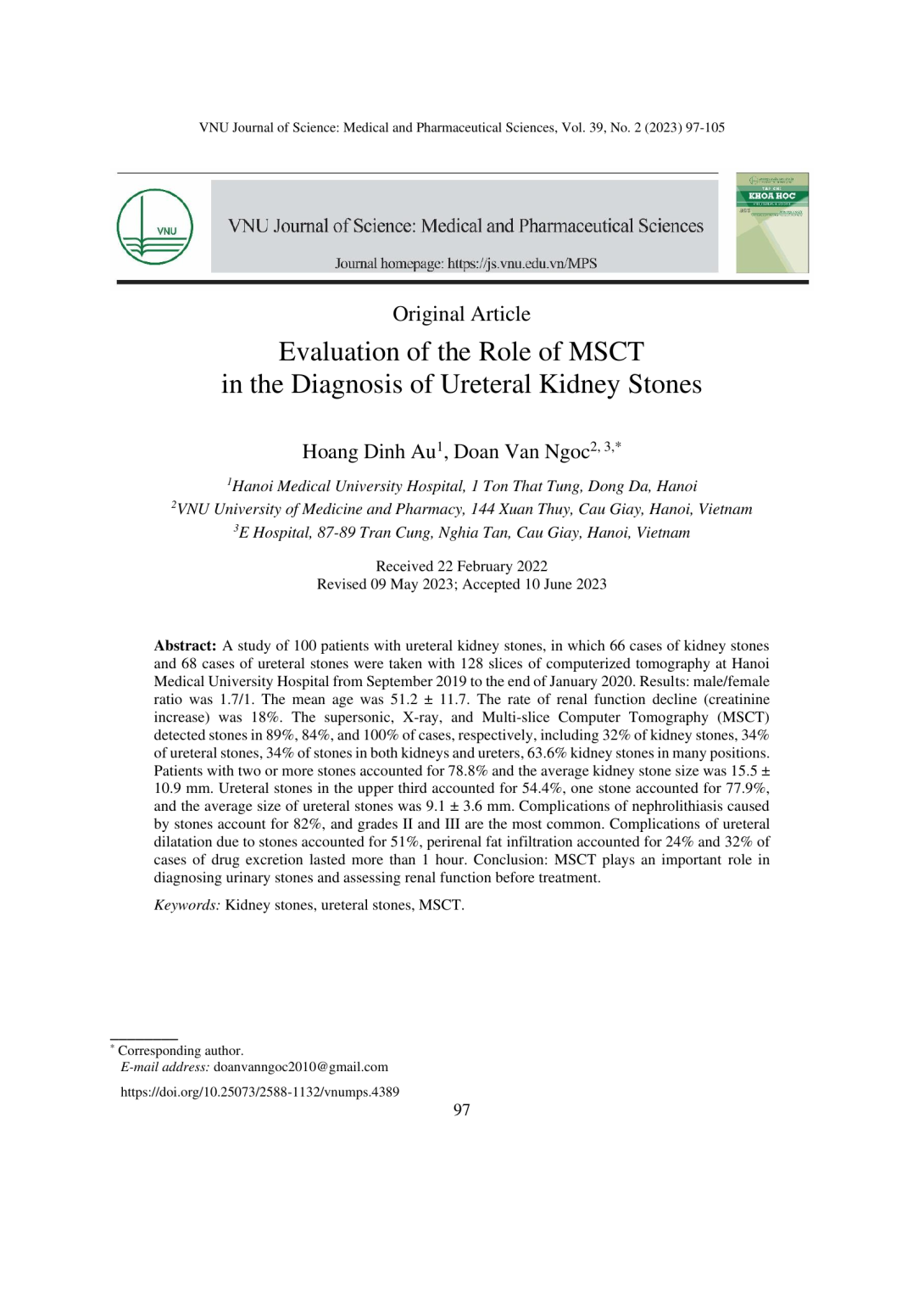
Nghiên cứu 100 bệnh nhân sỏi thận niệu quản, trong đó 66 trường hợp mắc sỏi thận, 68 trường hợp sỏi niệu quản được chụp cắt lớp vi tính (CLVT) 128 dãy tại Bệnh viện Đại học Y Hà Nội trong thời gian từ tháng 9 năm 2019 đến hết tháng 01 năm 2020. Kết quả: tỉ lệ nam/nữ là 1,7/1, tuổi trung bình 51,2 ± 11,7, tỉ lệ suy giảm chức năng thận (tăng creatinin) 18%, siêu âm phát hiện sỏi trong 89%, X quang phát hiện 84% trường hợp, CLVT đa dãy phát hiện 100% trường hợp, sỏi thận 32%, sỏi niệu quản 34%, sỏi ở cả thận và niệu quản 34%, sỏi thận ở nhiều vị trí 63,6%, bệnh nhân có từ 2 sỏi trở lên chiếm 78,8%, kích thước sỏi thận trung bình 15,5 ± 10,9 mm. Sỏi niệu quản đoạn 1/3 trên chiếm 54,4%, sỏi 1 viên chiếm 77,9%, kích thước sỏi niệu quản trung bình là 9,1 ± 3,6 mm. Biến chứng giãn đài bể thận do sỏi chiếm 82%, giãn độ II và III hay gặp nhất. Biến chứng giãn niệu quản do sỏi chiếm 51%, thâm nhiễm mỡ quanh thận chiếm 24%, 32% trường hợp bài xuất thuốc kéo dài trên 1 giờ. Kết luận: CLVT đa dãy đóng vai trò quan trọng trong chẩn đoán xác định sỏi tiết niệu và đánh giá chức năng thận trước điều trị.
A study of 100 patients with ureteral kidney stones, in which 66 cases of kidney stones and 68 cases of ureteral stones were taken with 128 slices of computerized tomography at Hanoi Medical University Hospital from September 2019 to the end of January 2020. Results: male/female ratio was 1.7/1. The mean age was 51.2 ± 11.7. The rate of renal function decline (creatinine increase) was 18%. The supersonic, X-ray, and Multi-slice Computer Tomography (MSCT) detected stones in 89%, 84%, and 100% of cases, respectively, including 32% of kidney stones, 34% of ureteral stones, 34% of stones in both kidneys and ureters, 63.6% kidney stones in many positions. Patients with two or more stones accounted for 78.8% and the average kidney stone size was 15.5 ± 10.9 mm. Ureteral stones in the upper third accounted for 54.4%, one stone accounted for 77.9%, and the average size of ureteral stones was 9.1 ± 3.6 mm. Complications of nephrolithiasis caused by stones account for 82%, and grades II and III are the most common. Complications of ureteral dilatation due to stones accounted for 51%, perirenal fat infiltration accounted for 24% and 32% of cases of drug excretion lasted more than 1 hour. Conclusion: MSCT plays an important role in diagnosing urinary stones and assessing renal function before treatment.
- Đăng nhập để gửi ý kiến
